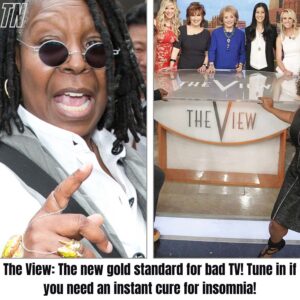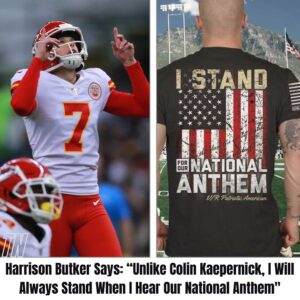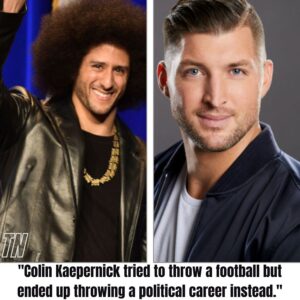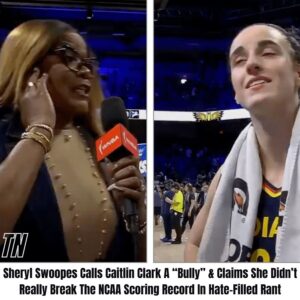
Clark’s endorsement portfolio spans a wide array of products and services, reflecting her widespread appeal and influence. From insurance and beverages to trading cards and supermarket chains, she’s become a sought-after ambassador for brands seeking to capitalize on her star power. Notably, her $28 million Nike deal, inclusive of a signature shoe line, underscores her status as a marketing powerhouse.
However, attributing Clark’s allure solely to her basketball prowess would be shortsighted. Her identity as a White woman excelling in a sport historically associated with Black athletes, her status as a straight individual entering a league with a significant LGBTQ+ presence, and her roots in Middle America contribute to her broader appeal. In a society where sport and culture intersect, Clark’s resonance extends beyond basketball, reflecting broader societal dynamics and values.
Recognizing the multifaceted nature of Clark’s influence is essential, as it acknowledges the interconnectedness of sport and society. While basketball serves as the primary catalyst for her impact, it’s essential to acknowledge the broader context that shapes the Caitlin Clark Effect.
While some may misinterpret these observations as criticism of Caitlin Clark or her achievements, they’re not intended as such. Clark is undeniably an exceptional player and, by all accounts, a person of integrity. However, it’s important to recognize that multiple factors contribute to why certain players are perceived as better brand ambassadors than others. This perspective was reinforced during an interview I conducted with Flora Kelly, a vice president of research for ESPN.
In discussing the significance of individual players versus team dynamics in drawing television audiences, Kelly emphasized that while exceptional talents like Clark can drive viewership to unprecedented levels, other factors also play a crucial role. These include the legacies of franchises or programs, rivalries between teams or players, and broader cultural or societal elements that generate viral moments.
Kelly highlighted the transformative impact of social media in amplifying awareness around athletes and creating moments that transcend sports. However, she cautioned against oversimplifying the equation solely to Caitlin Clark, emphasizing the multitude of storylines surrounding her that contribute to her appeal. In essence, it’s not a matter of either/or but rather a complex interplay of various factors.
Addressing the uncomfortable but necessary conversation about race when discussing brand ambassadors, Sue Bird, a White and gay icon in women’s basketball, pointed out the differing demographics between women’s soccer and basketball. She noted the tendency for women’s soccer to feature players who conform to traditional beauty standards, while basketball encompasses a diverse range of shapes, sizes, and backgrounds, including many Black, gay, and tall women. Bird suggested that societal perceptions and biases may influence the reception and representation of athletes from different demographics.
Paige Bueckers, a standout guard at the University of Connecticut, echoed similar sentiments during her acceptance speech at the ESPY Awards for best college athlete in women’s sports. She highlighted the disparity in media coverage between Black and White athletes in the WNBA, emphasizing the need to shed light on the contributions of Black women who often receive less recognition despite their undeniable value to the sport and society as a whole.
Her remarks gained further resonance in 2023 when Sabrina Ionescu, a White reserve guard, was chosen as the cover athlete for NBA2K24 over several dominant Black players, including A’ja Wilson and Jonquel Jones, who had garnered league MVP honors. This decision sparked scrutiny, highlighting the checkboxes that Ionescu, like Caitlin Clark, ticked off as a straight White player.
The WNBA’s history reflects its journey toward inclusivity, especially concerning sexual orientation and identity due to its significant LGBTQ+ player representation. Early promotional efforts tended to feature heterosexual narratives, despite the league’s diverse makeup. Sue Wicks, the WNBA’s first openly gay active player, expressed feeling constrained by this messaging.
While the league has made strides in inclusivity, societal attitudes remain varied, as evidenced by ongoing debates surrounding sexual orientation and identity, which may further enhance Clark’s appeal as an influencer.
Acknowledging these dynamics doesn’t diminish Clark’s basketball prowess but underscores the broader societal factors that influence brand ambassadorship at her level. It underscores that being an influencer isn’t solely about athletic ability but also reflects societal norms and biases.
News
Mark Wahlberg demands the firing of teachers who remove American flags from classrooms, saying it’s a disrespect to freedom and sacrifice.
Recently, actor and entrepreneur Mark Wahlberg has sparked intense debate across the nation with his bold statement demanding the immediate firing of any teacher who removes the American flag from their classroom. Wahlberg’s declaration that “The American flag stands for…
The View has become TV’s top sleep aid! After a ratings plunge, it’s the worst show on American TV!
In the ever-evolving world of television, few shows have faced the kind of dramatic downfall recently experienced by The View. Once a prominent platform for political and cultural discussion, The View has been dubbed the “worst show on American TV”…
Kid Rock stirred controversy with a message aimed at Garth Brooks: “True country stars love the flag! You can’t sing country if you don’t stand by it. Country music is about heart, soul, and patriotism.”
Country music has long been associated with themes of patriotism, tradition, and a deep-seated love for the American flag. Recently, Kid Rock made headlines with a provocative statement seemingly aimed at fellow country star Garth Brooks: “If you don’t love…
Harrison Butker declares, ‘I’ll always stand for our national anthem,’ taking a swipe at protests. Respect versus drama—Butker stands tall!
In the contemporary landscape of professional sports, athletes are often thrust into the center of societal debates, their actions and words echoing far beyond the fields and courts. Harrison Butker, a placekicker for the Kansas City Chiefs, recently reignited the…
We need fewer Kaepernicks and more Tim Tebows: “Colin Kaepernick tried to throw a football but ended up throwing a political career instead.”
In the realm of sports, athletes often become cultural icons, representing more than just their athletic prowess. Colin Kaepernick and Tim Tebow are two such figures, each embodying different ideals and values that have sparked widespread debate and divided public…
Breaking: Sheryl Swoopes Calls Caitlin Clark A “Bully” & Claims She Didn’t Really Break The NCAA Scoring Record In Hate-Filled Rant
WNBA legend Sheryl Swoopes took issue with the discourse every time Indiana Fever rookie Caitlin Clark is fouled and pointed to what happened Sunday with Chicago Sky forward Angel Reese. Reese clocked Clark on the head while Clark…
End of content
No more pages to load






